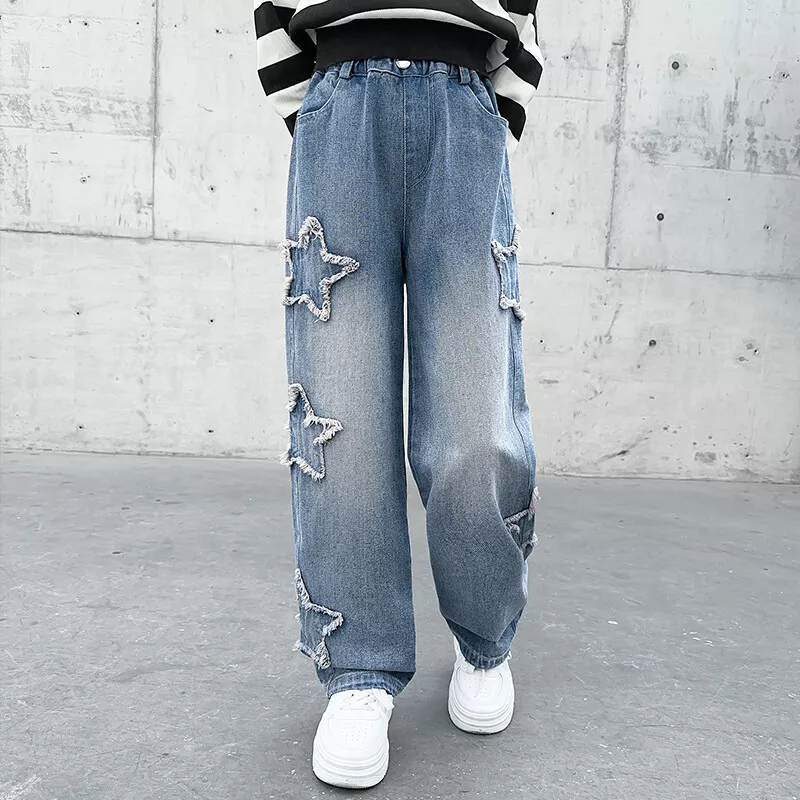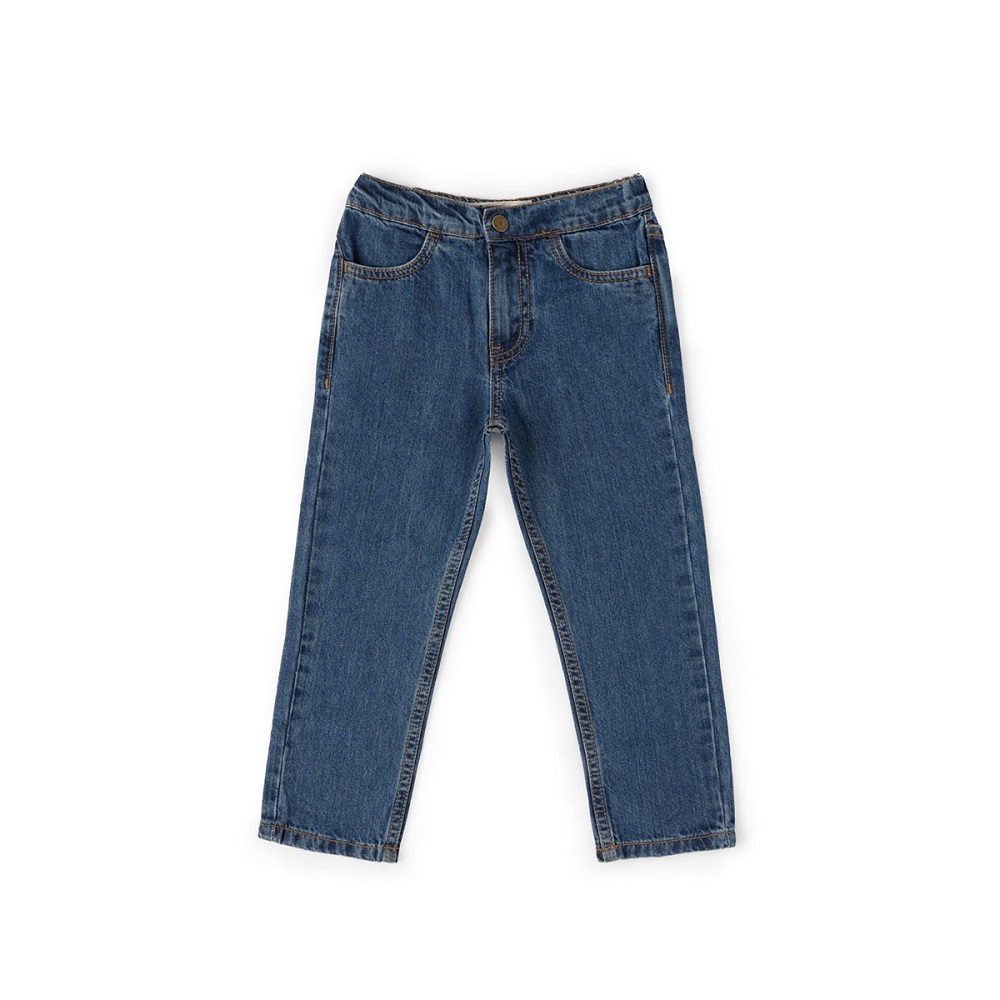How to hand wash jeans? Jeans are a staple in many wardrobes, known for their durability and casual style. While most jeans can be washed in a washing machine, handwashing is a gentle alternative that can help preserve the color, shape, and texture of your jeans. In this article, we will explore the step-by-step process of handwashing jeans, including important tips and techniques. By following these guidelines, you can maintain the quality and longevity of your favorite jeans while ensuring they are clean and fresh.
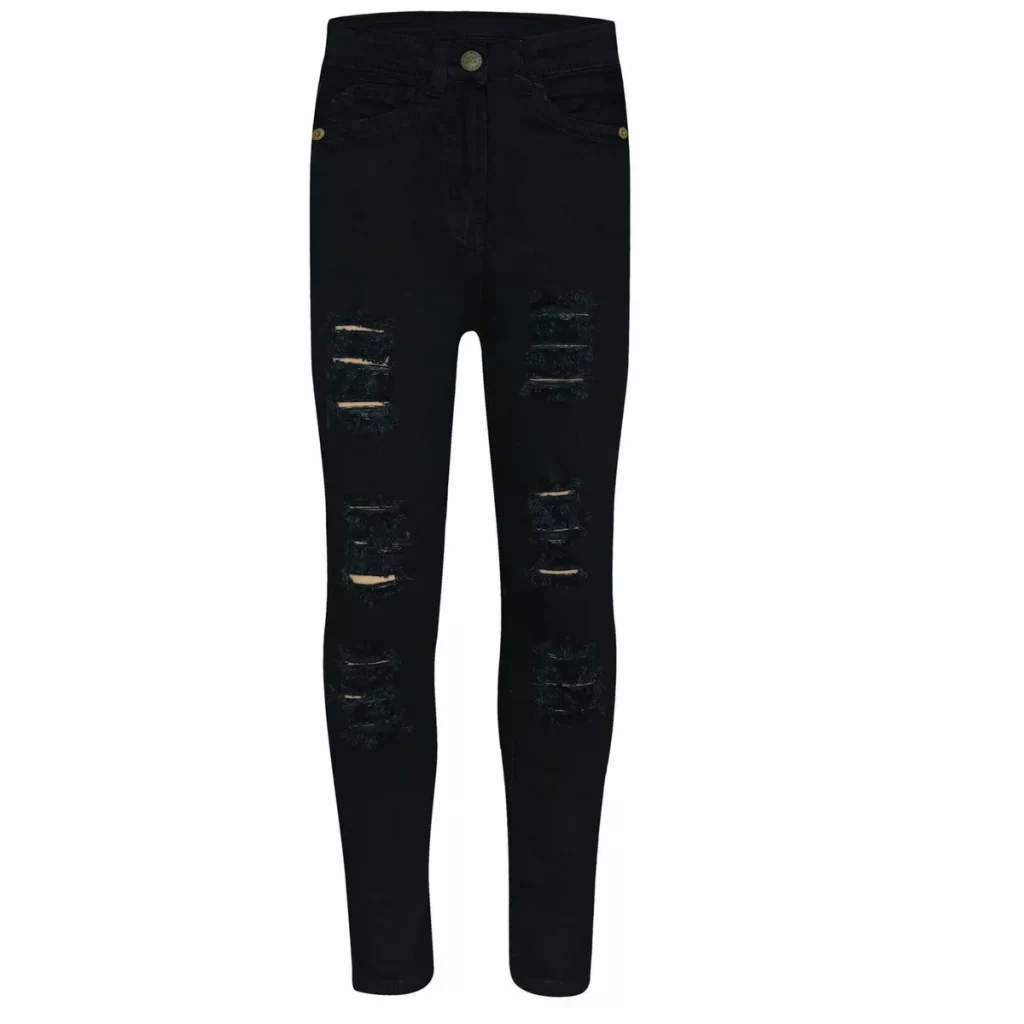
Read the Care Label:
Before starting the handwashing process, carefully read the care label on your jeans for any specific instructions or recommendations. This will provide valuable information about the fabric composition, special care requirements, and potential limitations of your lighten blue jeans.
Preparation:
Gather the necessary materials, including a clean basin or sink, mild detergent suitable for delicates, lukewarm water, and a soft brush or sponge. Fill the basin or sink with water, ensuring it is enough to fully submerge your jeans while leaving space for movement.
Spot Treat Stains:
Before immersing your jeans in water, inspect them for any visible stains or spots. Use a small amount of detergent or pre-treatment stain remover to target and gently scrub the affected areas. Allow the stain treatment to sit for a few minutes before proceeding with the handwashing process.
Submerge Jeans:
Turn your jeans inside out to preserve the color and prevent friction against buttons, zippers, or other hardware. Immerse your jeans in the basin or sink filled with lukewarm water, ensuring they are fully submerged for effective cleaning. Gently push the jeans up and down in the water to facilitate the loosening of dirt and grime.
Apply Mild Detergent:
Add a small amount of mild detergent suitable for delicates to the water. Avoid using bleach or harsh chemicals as they can damage your jeans. Swirl the water gently to distribute the detergent, creating a soapy solution.
Clean and Gently Agitate:
Using your hands or a soft brush, gently agitate the jeans in the soapy water. Pay particular attention to areas prone to dirt and sweat, such as the cuffs, waistbands, and knees. Lightly scrub any stains or heavily soiled areas with gentle circular motions. Avoid excessive rubbing or twisting, as this can cause friction and potential damage.
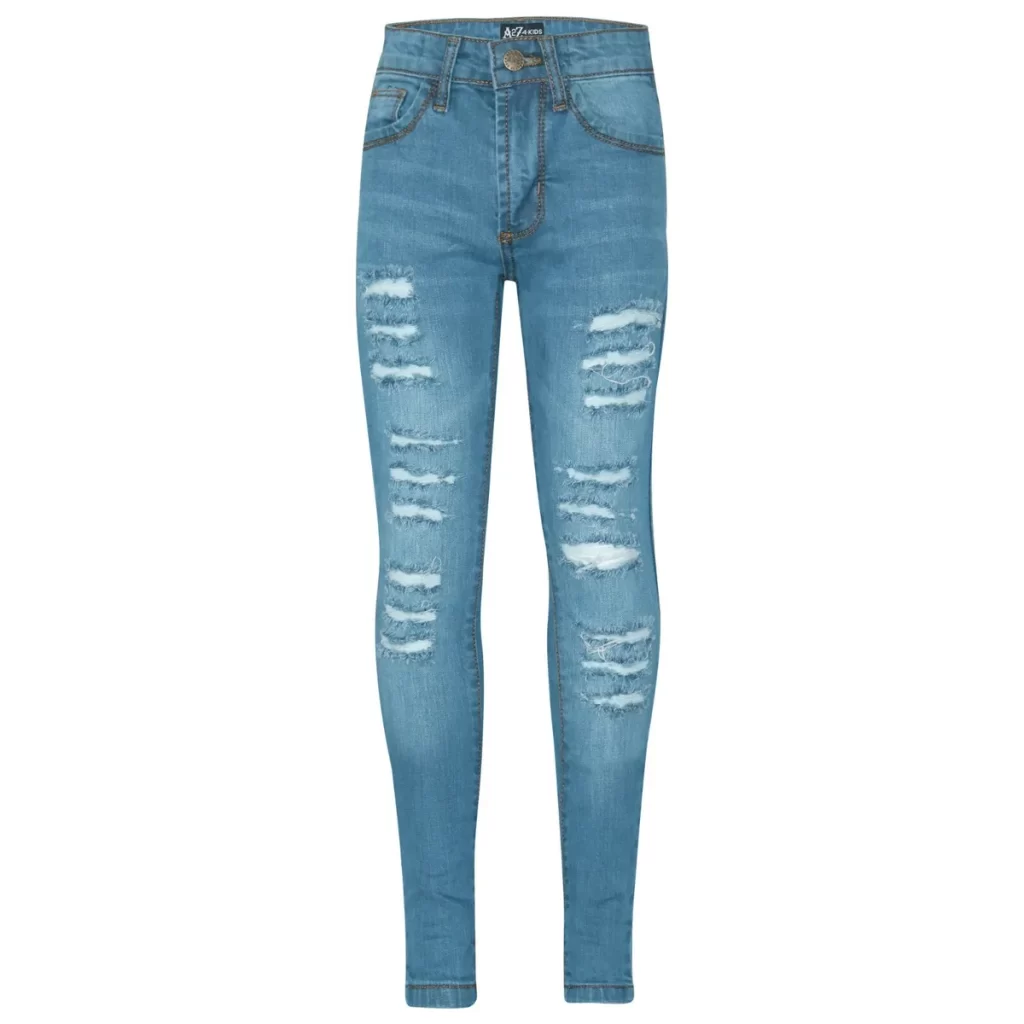
Rinse Thoroughly:
Thoroughly rinse your jeans with lukewarm water to remove any residual soap or detergent. Drain the soapy water from the basin or sink and refill it with clean water. Repeat the gentle agitation process, ensuring that all soap suds are removed from the fabric.
Remove Excess Water:
After rinsing, carefully lift your jeans from the basin or sink, allowing excess water to drain naturally. Avoid wringing or twisting the fabric, as this can lead to stretching or distortion. Instead, gently squeeze the jeans to remove excess water without compromising their shape.
Air Dry:
Lay a clean towel flat on a surface and place your jeans on top of it. Arrange them in their natural shape and smooth out any wrinkles or folds. Allow your jeans to air dry naturally in a well-ventilated area, avoiding direct sunlight or direct heat sources, which can cause fading and damage to the fabric. A drying rack or line can also be used to hang your jeans, ensuring proper airflow and maintaining their shape.
Finishing Touches:
Once your jeans are completely dry, turn them right side out and gently fold or hang them in your wardrobe. If necessary, you can lightly iron your tall wide leg jean using the appropriate temperature setting for denim. Turn off the steam feature and use a pressing cloth to protect the fabric from direct contact with the iron.
How to store women’s jeans
Women’s jeans are a fashionable and versatile wardrobe staple that deserves proper care and storage. By ensuring correct storage techniques, you can effectively maintain the quality, shape, and appearance of your jeans over time.
Clean and Prepare:
Before storing your jeans, ensure they are clean and dry. Always remove any stains, dirt, or debris before proceeding with storage to prevent them from setting and becoming harder to remove over time. Follow the manufacturer’s instructions for washing and drying your jeans, taking care to preserve their color and shape.
Folding vs. Hanging:
Decide whether to fold or hang your jeans based on personal preference and available storage space. While jeans can be hung, folding is generally recommended to maintain their shape and minimize unwanted creases. Hanging can result in stretching or distortion over time, especially for heavier denim fabrics. However, if you prefer to hang your jeans, choose sturdy hangers with clips or padded hangers to properly support the weight and prevent slipping.
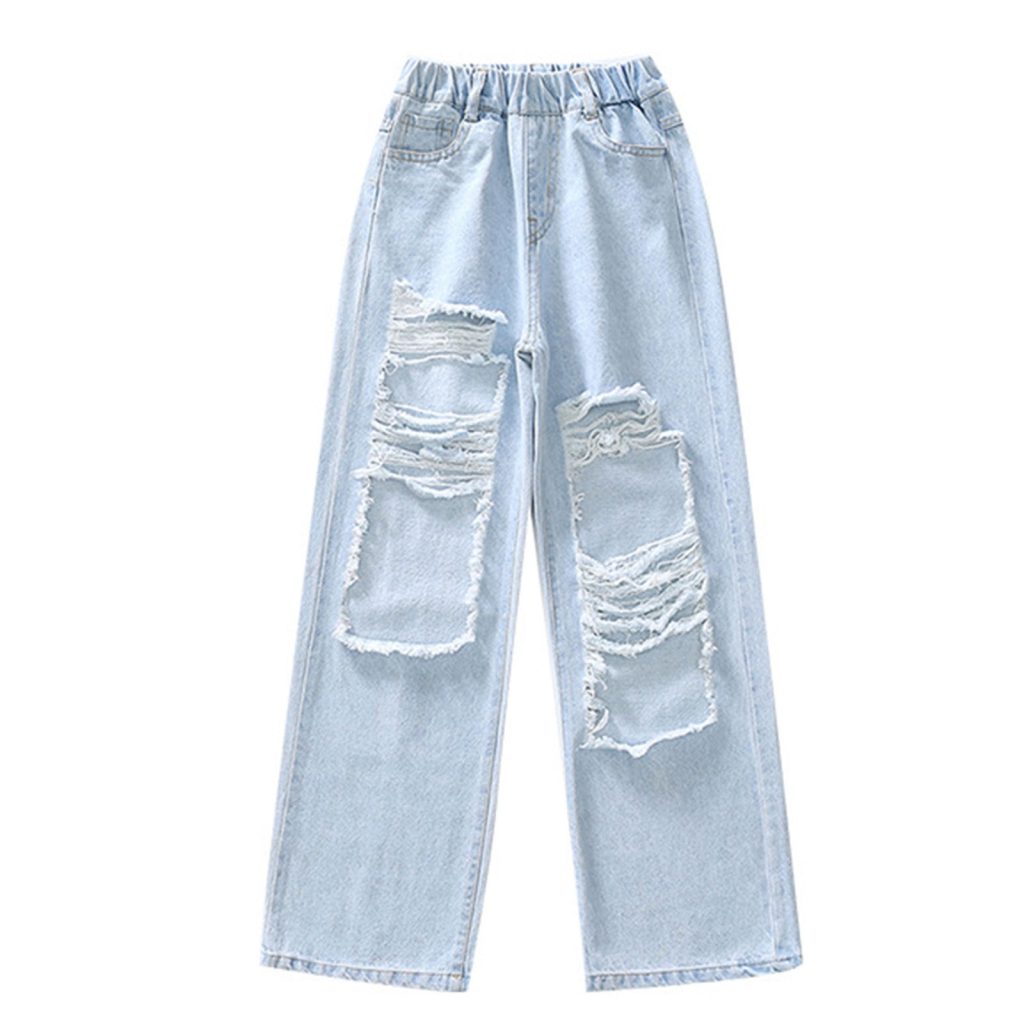
Folding Jeans:
To fold your jeans, begin by closing the zipper and buttons. Lay them flat on a clean surface, facing up or inside out to protect the color and finish. Fold one leg over the other, aligning the side seams and ensuring that the waistband and hems are even. Fold the jeans in half, matching the waistband to the hemline. Store folded jeans in a dedicated jeans drawer, shelf, or stack them vertically in a storage box or basket to maximize space and visibility.
Proper Storage Containers:
Select suitable storage containers or organizers to keep your jeans organized and protected. Clear plastic bins or fabric storage boxes can be ideal options as they provide visibility and protection against dust, moisture, and pests. Choose containers that are large enough to accommodate your folded jeans without excessive compression, which can lead to creasing. Consider labeling or categorizing containers for easy identification and access.
Avoid Sunlight and Humidity:
Avoid storing jeans in direct sunlight or areas exposed to high levels of humidity. Prolonged sun exposure can lead to fading, while moisture can create a breeding ground for mold or mildew. Ideally, store your jeans in a cool, dry, and well-ventilated space, such as a closet or dresser drawer. Consider using moisture absorbers or sachets to maintain a dry environment, especially in areas prone to humidity.
Rotate Jeans:
To prevent unnecessary stress on the fabric and maintain an even wear pattern, it is advisable to rotate your creased jeans regularly. Instead of consistently wearing the same pair, alternate between different jeans in your collection. This practice allows each pair to rest and recover between wears and washing, preserving their shape and extending their lifespan.
Wrinkle Reduction Techniques:
To reduce wrinkles and creases during storage, try the following techniques:
- Tissue Paper: Place acid-free tissue paper between folded jeans to minimize friction and potential creasing.
- Roll Technique: Instead of folding, consider rolling your jeans. Start at the hemline and roll them tightly upward, avoiding excessive pressure. This method helps minimize fold lines and allows for easy identification and access to specific pairs.
- Hanging with Clips: If hanging your jeans, use padded hangers with clips to minimize creasing. Attach the clips to the waistband or belt loops, ensuring they are not overly tight to avoid stretching.
Conclusion:
Handwashing jeans is a gentle and effective method for keeping them clean and maintaining their quality over time. By following the steps outlined above, you can successfully handwash your jeans while preserving their color, shape, and texture. Remember to always read the care label and exercise caution with spot treatments, detergent selection, and the drying process. With proper handwashing, you can prolong the life of your jeans and continue to enjoy their timeless style and comfort for years to come.







